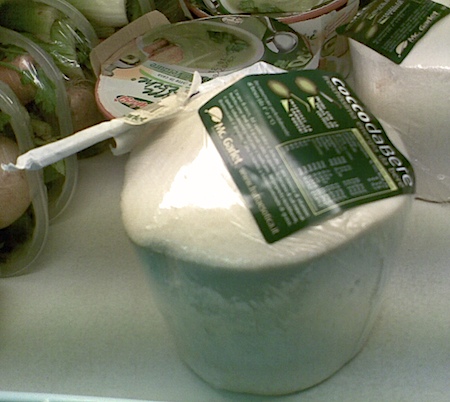The late, great Garrett Hardin wanted society to move beyond literacy and numeracy to ecolacy, an ability to think ecologically. And he exemplified this with various stories that hinged on the consequences of small changes. Hardin’s key question: “And then what?” I think he’d have liked this one, which I heard on National Public Radio.
The government of Kiribati, a small island state in the Pacific, was concerned about overfishing. So it decided to subsidize the coconut oil industry, because if people earned more from coconut, they would fish less. Unfortunately, as the bumper sticker would have it, A bad day fishing is better than a good day working. In Kiribati, as elsewhere. After the coconut subsidies were introduced fishing increased by a third and the reef fish population dropped by almost a fifth.
Sheila Walsh, a graduate student at the Scrippps Institute of Oceanography, went out to Kiribati and discovered that “people earned more money making coconut oil, which meant they could work less to support themselves. And they spent their new leisure time fishing”.
Turns out that this is something that happens often in programmes to help fish stocks by persuading fisherfolk to do other things. People who fish like to fish, and that’s what they do. They like to be out on the water, according to lots of studies. Recognizing that, one potential solution incorporates ecolacy:
Walsh says she’s trying to help the government figure out how to fix the problem of overfishing, which they’d accidentally made worse. Maybe, she says, the government can create new jobs out on the water by hiring the fishermen to patrol newly created nature preserves.
Without their tackle on board, presumably.
